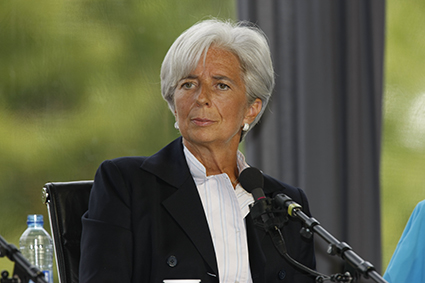Implementation, investment, and inclusiveness: these three policy goals will dominate the G-20 agenda this year, including the first meeting of finance ministers and central bank governors in Istanbul next week. As Turkish Prime Minister Ahmet Davutoglu recently put it: “Now is the time to act”, the IMF Managing Director Christine Lagarde wrote on the organization’s website.
There is a lot at stake. Without action, we could see the global economic supertanker continuing to be stuck in the shallow waters of sub-par growth and meager job creation. This is why we need to focus on these three “I’s”:
1. Implementation
The immediate challenge for G-20 economies is to implement the ambitious commitments made at the Brisbane Summit in November. If delivered, they can add more than $2 trillion to the global economy and create millions of new jobs over the next four years. The IMF has been asked to monitor the implementation of this growth strategy and will do so – country by country, reform by reform.
The upside is tremendous. It comes on top of the potential further boost from recent oil price declines. And yet, the global economy faces significant downside risks as well. That is why, in spite of cheaper oil and stronger US growth, the IMF in January cut its global growth forecasts for both 2015 and 2016 (to 3.5% and 3.7%).
One risk emanates from what I have called “asynchronous monetary policy” – normalizing monetary policy in the US while most others are increasing monetary stimulus.
A second risk is the strengthening US dollar.
A further risk is that the Euro area and Japan could remain trapped in a twilight zone of low growth and low inflation for a prolonged period. These “low-low conditions” would raise the risk of recession and deflation, because they would make it even harder for many countries to reduce high unemployment and high debt.
2. Investment
This all points to the need for a more powerful policy mix. Accommodative monetary policies remain essential to support demand in many countries. And fiscal adjustment should remain as growth and job-friendly as possible. But that is not enough. We need a decisive push for structural reforms in areas such as trade, education, health, social safety nets, and labor and product markets, as well as efficient infrastructure.
In particular, I strongly support the ambitious new plan to boost quality infrastructure investment as part of the G-20 growth agenda. We have already seen some progress. Follow-through on the European Commission’s ambitious €315b ($356b) investment plan – including by removing regulatory obstacles that have held back investment – should have strong payoff.
3. Inclusive Growth a Must
The G-20 growth strategy also stresses the need for more inclusive and sustainable growth. One of its key goals, for example, is to close the gender gap by 25 percent over the next decade. This would bring more than 100 million women into the labor force, thus increasing global growth while also reducing poverty and inequality.
Policymakers should take inspiration from countries such as Chile and the Netherlands. These economies have sharply increased female labor force participation through smart policies that emphasize affordable childcare, maternity leave, and workplace flexibility.
Comprehensive Deal
This year global leaders will also have a chance to strike a comprehensive deal to cut carbon emissions at the Paris summit in December. Eliminating energy subsidies will be key. It is encouraging to see the recent decrease in fossil fuel subsidies in countries such as Cameroon, Côte d’Ivoire, Egypt, Haiti, India, Indonesia, and Malaysia. This policy, for which the IMF has been pushing hard, is good for the environment and good for growth.


